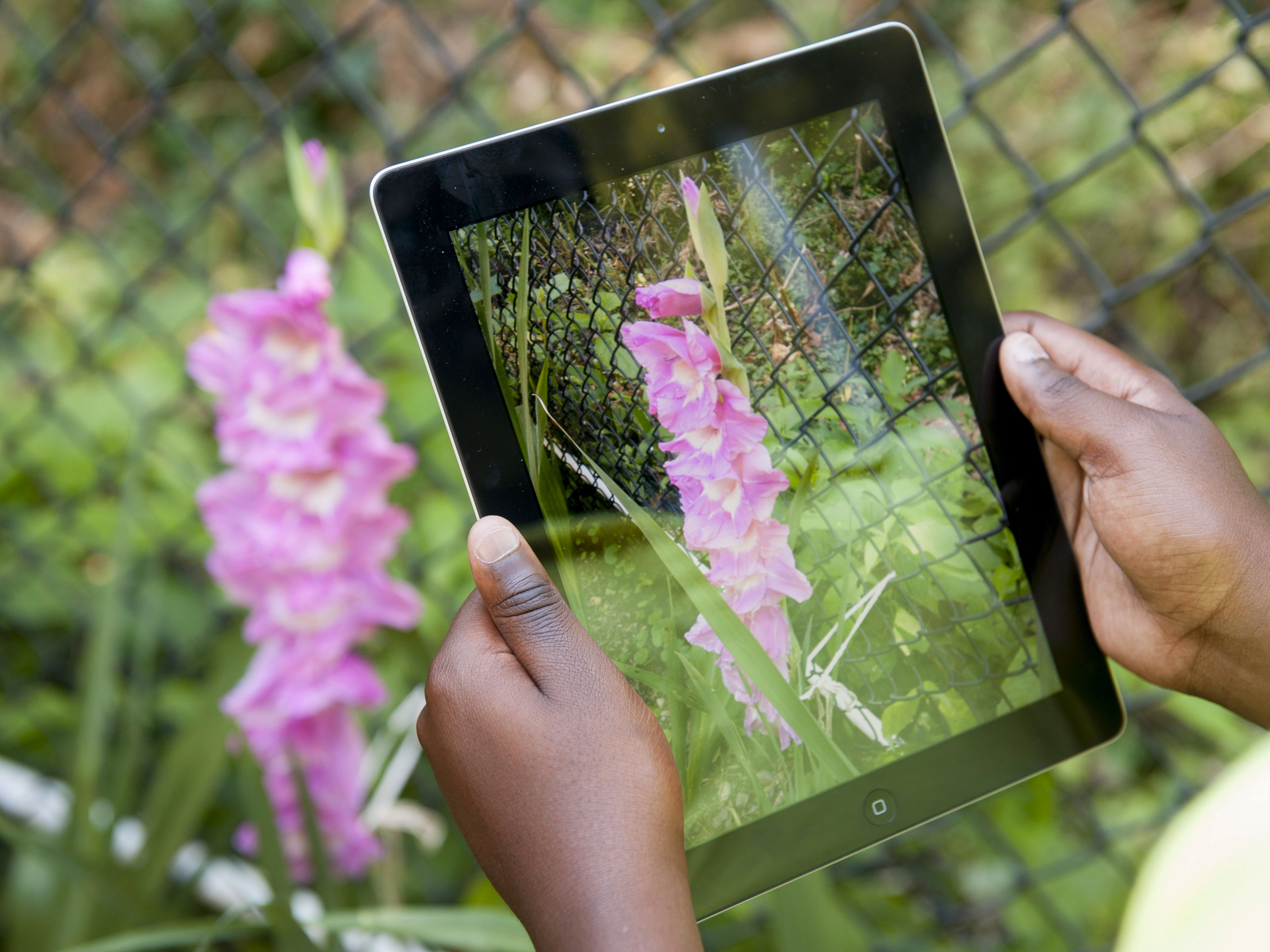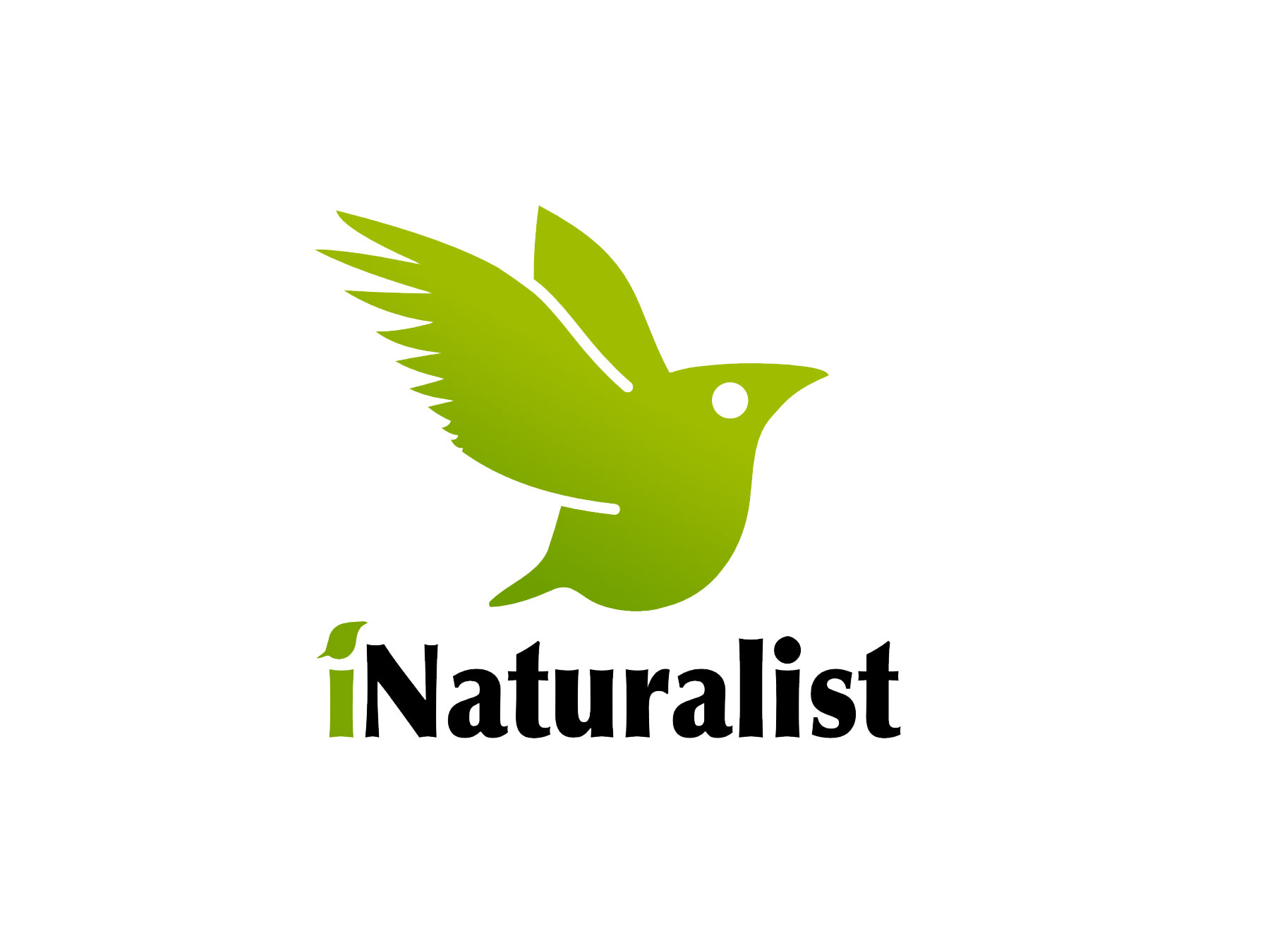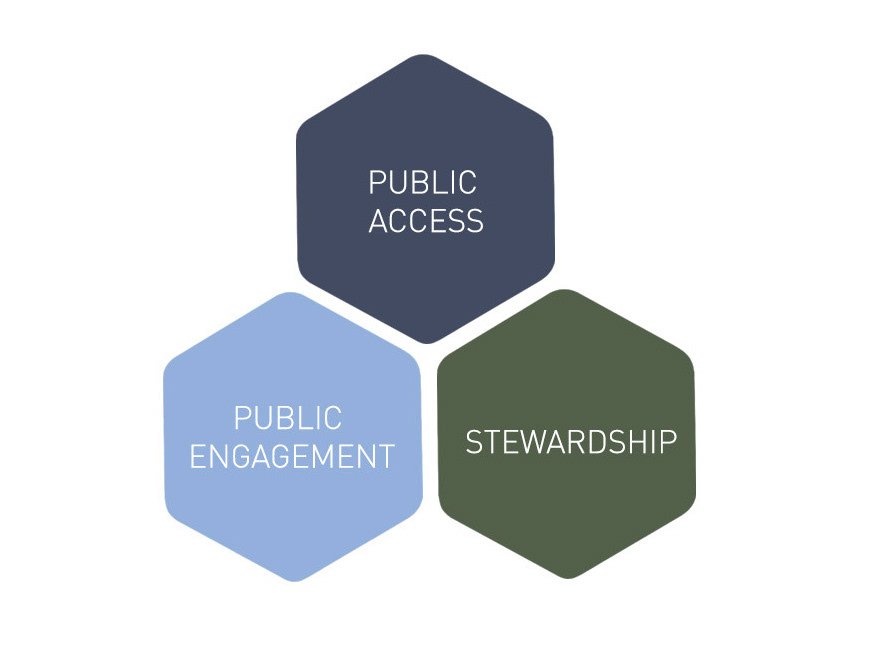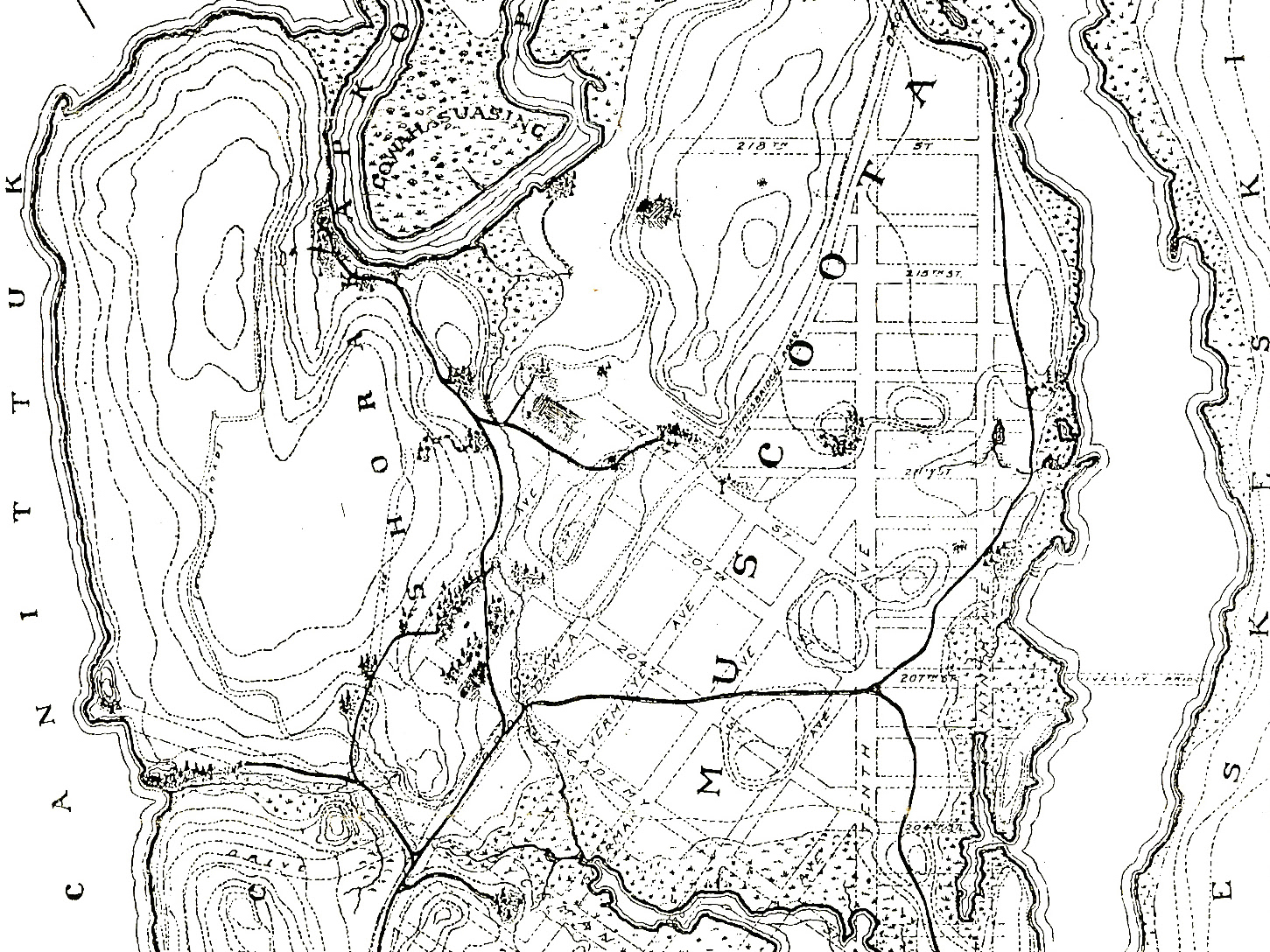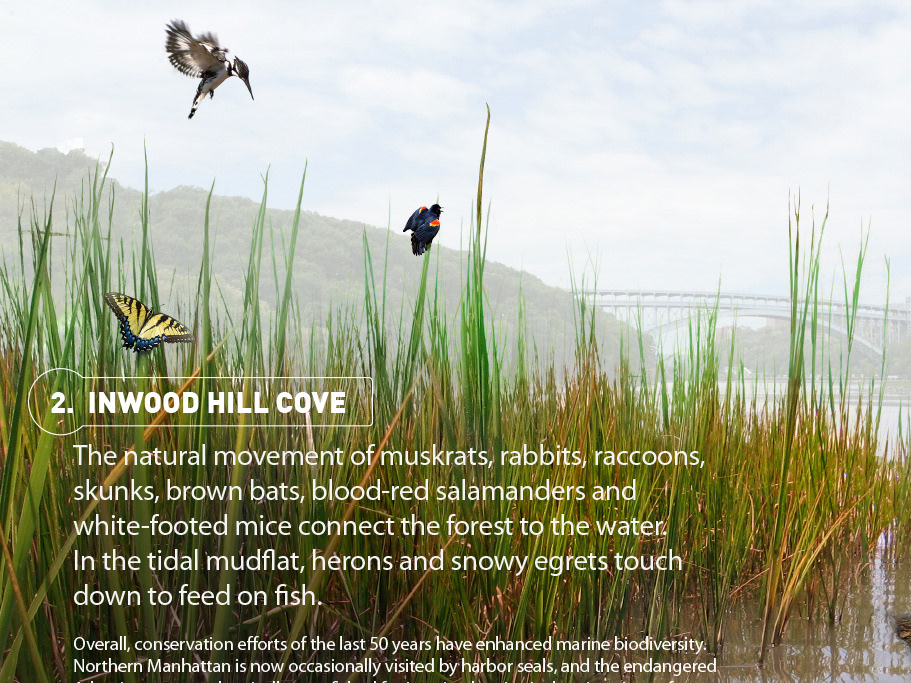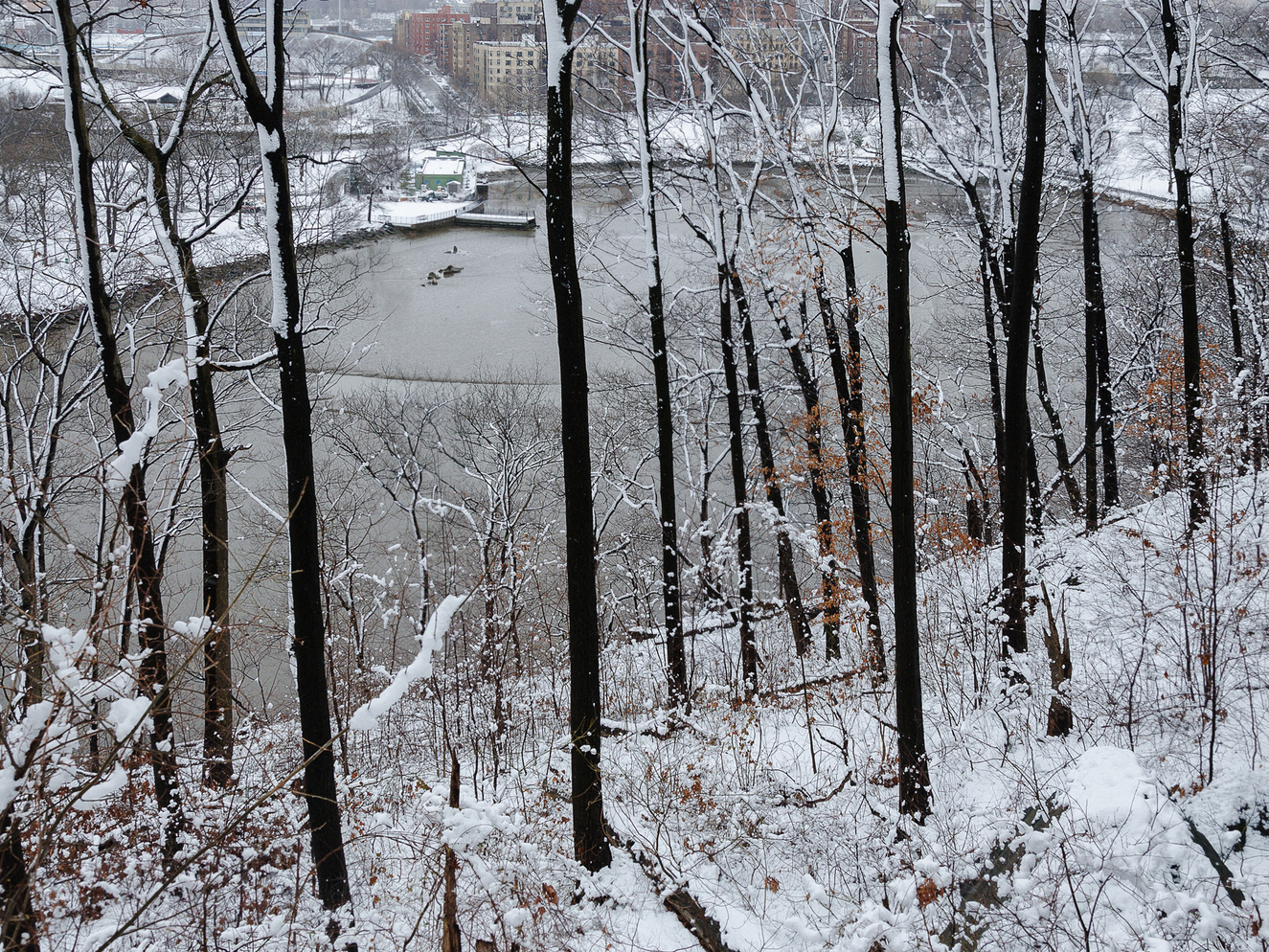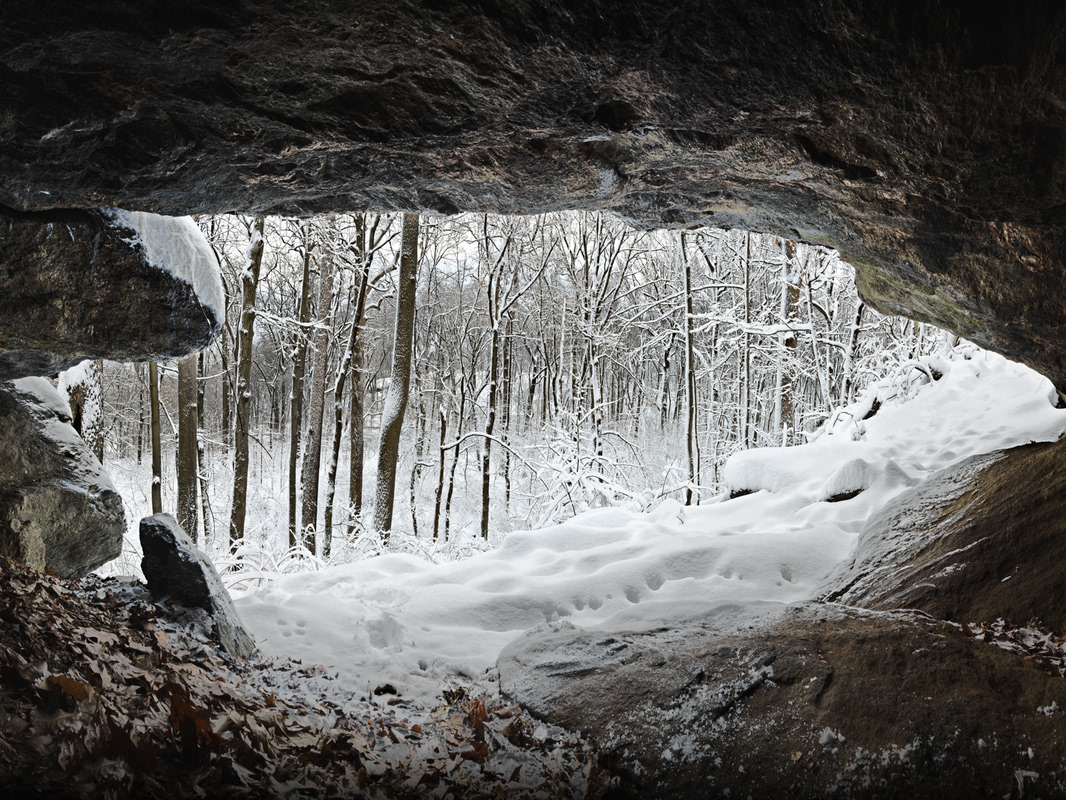Gathering around a glacial pothole scoured out by swirling waters and stones about 15,000 years ago to record species in the area. Photo: Adam Stoltman
Photo: Adam Stoltman
Explorers of Northern Manhattan
We explore the marshes and forests of Northern Manhattan. Our goal is to better understand the plants and animals living in our own backyard. We go on several nature walks a year in Inwood Hill Park and four coves in the area. These are Muscota Marsh, Inwood Hill Cove, North Cove, and Sherman Creek. On the hikes we identify, catalogue, and keep an eye on the wildlife. By identifying the different plants and animals – what we call “biodiversity” – and revisiting these plants and animals over time, we can measure the health of our natural places. As more of us record our observations for others to see, we can tell if it is human activity that is helping or hurting things. Once we know that, we can inform other community members, City Parks, and Representatives to help us make positive changes.
Seeing Before Looking
Before we look at the world as a scientist, we need to go deeper. Slow down, turn-off your cell phone, slow time down, and listen. Sense the breathtaking diversity of species around us. Take a moment to reflect on the native Americans who also gazed up at this canopy of red oak and tulip trees centuries ago. Where did the Tulip Trees come from? Were they cherished and transplanted from elsewhere by people long ago for harvest to make dugout canoes for ferrying and fishing in the once abundant waters? In a competition for sunlight, do Tulip Trees encourage other trees to reach up higher towards the sun resulting in this beautiful tall canopy and home to so much life? In the symbiotic architecture of these interdependent communities including human, can we sense a higher wisdom? Before we delve into the science we try to ground ourselves in the basic truth of life: the whole creates the parts and the parts create the whole. We may never be able to see the beginning or whole for what it is, but we can study the parts, and maybe glean a bit of this higher wisdom that keeps life flourishing for generations to come.
What Are We Looking For?
When we are in the field we ask Explorers to look for....and record their...
Why is Biodiversity Important?
Biodiversity increases resilience to climate change by mitigating floods and rising temperatures. It’s vital to the health and well-being of residents, the productivity of waterways and soil, and quality-of-life of a global city. This is important because the healthier our natural places are, the healthier we are.
Everything is connected.
Photo: Adam Stoltman
Photo: Adam Stoltman
Expanding Our Perspective
Our Guest Speakers and Partners Program
We welcome diverse views and periodically host guest speakers on our nature walks. Conservancy North also works in concert with the biodiversity study of Natural Areas Conservancy -- the partner of the New York City Parks. We also partner with Friends of Inwood Hill Park, New York Restoration Project, Manhattan Wetlands and Wildlife Association, and others to help expand the local conservation community and our own perspectives of the natural world.
Methods and Tools
Using established study methods developed specifically for NYC natural areas by the Museum of Natural History, volunteers of all ages, interest, and education levels combine efforts to better understand the unique ecosystems of Northern Manhattan and to become effective citizen scientists and advocates for our natural spaces. We also make it easy to catalogue and share our Observations with the classroom and worldwide with the scientific community by using the iNaturalist App. Visit the Four Coves Biodiversity Project on iNaturalist.
So contact us, come along, learn hands-on about environmental science and help protect the one world we live in.
iNaturalist helps you identify the plants and animals around you and connect with a community of over 750,000 scientists and naturalists who can help you learn more about nature. iNaturalist provides a place to record and organize nature findings, meet other nature enthusiasts, and learn about the natural world.
Step 1. Install iNaturalist free app on your Android Smart Phone or Install iNaturalist App on your Apple iPhone or iPad
Step 2. Check out these video tutorials on how to use iNaturalist.
Step 3. Now that you got the gist of it, the next time you are on a walk in Northern Manhattan, add your nature observation to the Four Coves Biodiversity Project.

